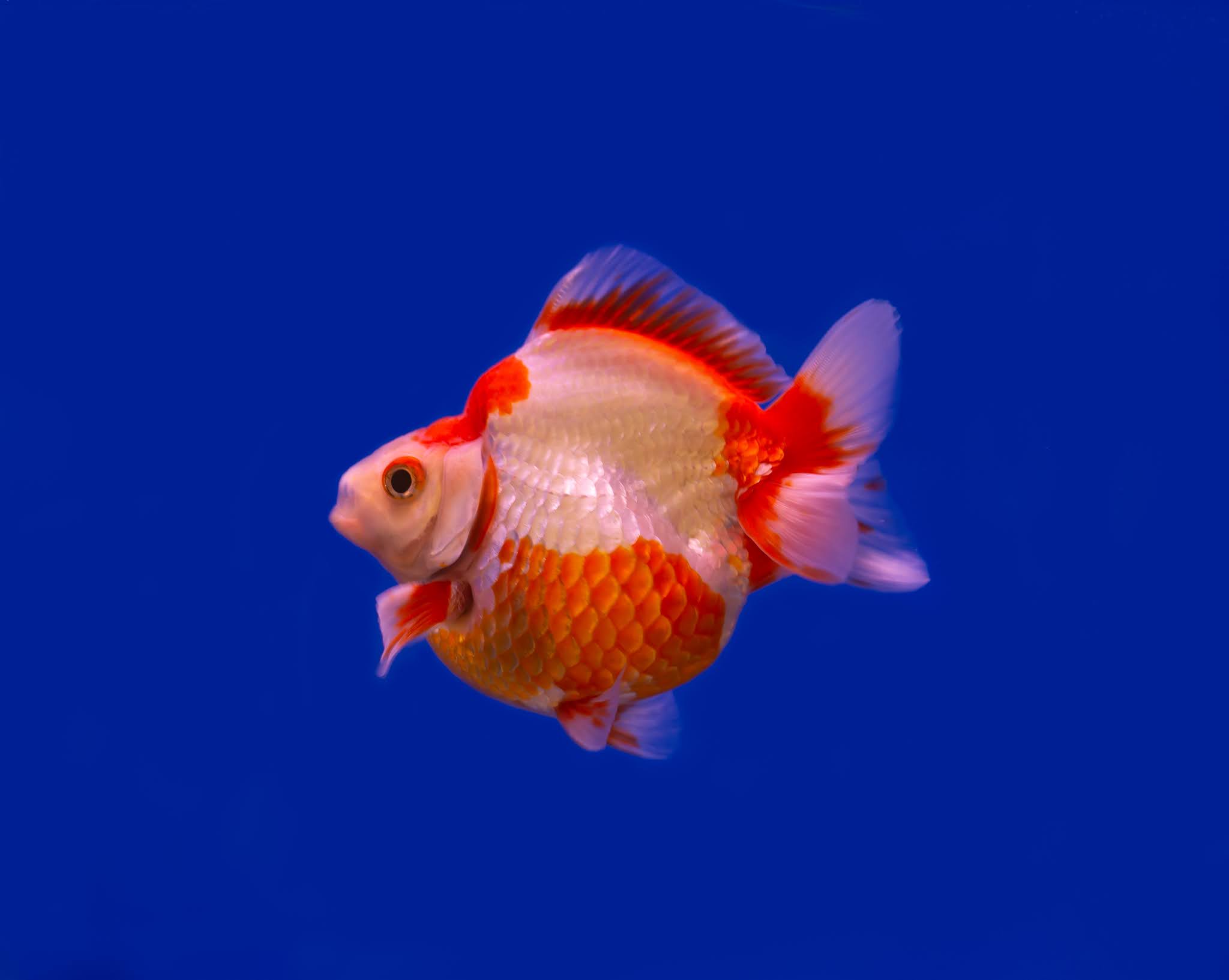Ryukin goldfish, with their flowing fins and charming round bellies, are a captivating addition to any aquarium. Breeding these delightful creatures can be a rewarding experience, but it requires careful planning and a thorough understanding of their specific needs. This comprehensive guide will walk you through every step of the Ryukin breeding journey, from setting up the ideal breeding environment to nurturing the delicate fry.
Preparing the Perfect Ryukin Nursery
A separate breeding tank is highly recommended for Ryukin goldfish, creating a controlled environment that minimizes stress and maximizes breeding success. A 20-gallon tank is generally considered the minimum size, providing ample space for a small breeding group. Larger tanks are always preferable, offering even more room for the fish to swim and explore.
Essential Tank Components
Within the breeding tank, incorporating specific elements is key to encouraging successful spawning:
- Spawning Mediums: These mimic the natural environment where Ryukins would lay their eggs. Java moss and spawning mops are excellent choices, offering plenty of surface area for the adhesive eggs to cling to.
- Gentle Filtration: A sponge filter is ideal, providing essential filtration without creating strong currents that could disturb the eggs or delicate fry.
- Controlled Water Parameters: Maintaining pristine water quality is paramount. The temperature should mimic the seasonal changes that would naturally trigger spawning, often achieved by lowering the temperature to around 60-62°F (15.5-16.6°C). Regular partial water changes are essential for maintaining fresh, clean water, vital for healthy eggs and developing fry.
Selecting and Conditioning Ryukin Parents
Choosing the right parent fish and properly conditioning them is crucial for breeding success.
Identifying Males and Females
- Males: During breeding season, males develop tiny white bumps called breeding tubercles, or nuptial tubercles, on their gill plates and pectoral fins. Uncover the fascinating world of linguistic blends and explore the creative power of a breakout portmanteau.
- Females: As their eggs develop, females become noticeably rounder in the belly.
Conditioning for Breeding
Once potential parents are identified, conditioning involves providing them with a high-protein diet to ensure they’re in optimal breeding condition. Bloodworms, daphnia, and brine shrimp are excellent choices, supplemented with high-quality flake or pellet food. A ratio of 2-3 males per female is generally recommended, promoting healthy competition and potentially increasing spawning success.
The Spawning Event and Fry Care
Spawning Behavior
With the right setup and well-conditioned fish, spawning often occurs naturally. Males will chase and nudge females, stimulating them to release their adhesive eggs, which will stick to the provided spawning mediums. Once spawning is complete, indicated by a slimmer female and the presence of eggs, it’s crucial to remove the parents to prevent them from eating the eggs.
Caring for Ryukin Fry
- Hatching: Depending on the water temperature, eggs typically hatch within 2-7 days.
- Feeding: Newly hatched fry are incredibly tiny and require specialized food like infusoria or commercially available fry food. Frequent, small meals are essential for their growth.
- Water Quality: Maintaining excellent water quality is crucial at this stage. Regular, small water changes will help prevent disease and promote healthy fry development.
Advanced Breeding Techniques and Troubleshooting
For experienced breeders, exploring advanced techniques like selective breeding can enhance specific traits, such as color or fin shape.
Common Breeding Challenges
- Fungal Infections on Eggs: Gently remove affected eggs and consider using methylene blue, following instructions carefully. Increased water flow may also help.
- Poor Hatch Rates: Verify optimal water parameters and ensure parent fish were properly conditioned.
- Fry Mortality: Frequent water changes, adequate feeding, and quarantining sick fry can help mitigate mortality.
Ethical Considerations in Breeding
Responsible breeding involves finding suitable homes for offspring and avoiding overbreeding. Overbreeding can contribute to genetic weaknesses, so a balanced approach is crucial.
Are Fancy Goldfish Hard to Breed?
Breeding fancy goldfish, including Ryukins, presents both opportunities and challenges. While Ryukins can reproduce readily under ideal conditions, the potential for a large number of offspring and the possibility of undesirable traits require careful planning.
The Ryukin Nursery: A Dedicated Spawning Tank
A separate spawning tank, around 20 gallons, is highly recommended for breeding Ryukins. This controlled environment minimizes stress, encourages successful spawning, and simplifies monitoring of eggs and fry. While breeding in the main tank is possible, it’s not ideal and may result in lower hatch rates or increased fry mortality.
Predicting Ryukin Offspring: The Genetic Lottery
Breeding fancy goldfish involves some unpredictability. The distinctive traits of Ryukins, such as rounded bodies and flowing fins, are not always guaranteed to pass down to offspring. Current research suggests certain genes influence these variations, but the precise mechanisms are still being explored. This element of chance is both a fascination and a potential challenge in fancy goldfish breeding.
Ryukin Romance: Social Dynamics and Breeding Behavior
Ryukins are social creatures and their breeding habits reflect this. A healthy mix of males and females often encourages spawning activity. Ongoing research continues to explore the intricate social dynamics and hormonal cues that influence their breeding behavior.
Breeding Responsibly: Ethical Considerations
Before breeding Ryukins, consider the ethical implications. Are you prepared for potentially hundreds of fry? Do you have the resources and space to provide proper care? Overbreeding can lead to genetic weaknesses in captive populations, so a responsible approach is paramount.
How Can You Tell if a Ryukin Goldfish is Male or Female?
Sexing Ryukin goldfish can be tricky, especially with younger fish. However, several physical and behavioral clues can help you determine their sex.
Physical Clues
- Body Shape: Mature females often develop a rounder body shape, especially when carrying eggs, while males maintain a more streamlined form.
- Breeding Tubercles: During breeding season, males develop small, white bumps called breeding tubercles on their gill plates and pectoral fins.
- Vent: The female’s vent is typically rounder and more prominent, particularly when gravid. The male’s vent is smaller and more concave.
Behavioral Clues
- Chasing: During breeding season, males will actively chase females around the tank as part of their courtship behavior.
Factors Affecting Sexing Accuracy
- Age: Sexing is most reliable in mature fish (1-2 years old). Younger Ryukins may not display clear sexual dimorphism.
- Environment: Stress and poor water quality can impact the development of secondary sexual characteristics, making sexing more difficult.
Can Ryukin Goldfish Live in a Pond?
Ryukin goldfish can thrive in ponds, but specific conditions must be met to ensure their well-being.
Temperature Considerations
Ryukins are most comfortable in water temperatures between 65°F and 72°F (18°C – 22°C). They can tolerate brief, gradual temperature drops a few degrees below freezing if properly acclimated. Sudden temperature changes, however, are dangerous. Ryukins accustomed to heated aquariums may not be suitable for outdoor ponds without extensive, gradual acclimation.
Water Quality
Maintaining excellent water quality is crucial in ponds, just as it is in aquariums. Regularly monitor pH, ammonia, nitrite, and nitrate levels. Filtration and regular water changes are vital.
The Pond Environment
Ryukins need ample swimming space, suitable depth, and oxygenated water. Plants provide oxygen, shade, and hiding places from predators. Protection against predators like birds, raccoons, and cats is essential.
Introducing Ryukins to a Pond
Acclimate Ryukins gradually to the pond environment to minimize stress. Float the bag, slowly add pond water to the bag over several hours, and then gently release the fish.
Growth and Breeding in Ponds
Ryukins often grow larger in ponds than in tanks, sometimes reaching 8 inches or more. They also readily breed in ponds, so provide appropriate plants or other spawning media.
Overwintering Ryukins
Depending on your climate, you may need to take precautions to help your Ryukins survive the winter. Pond heaters, deeper ponds, and insulation can help. In extremely cold climates, bringing them indoors for the winter might be necessary.
Remember, responsible fishkeeping involves research and careful planning. By following these guidelines and addressing the specific needs of Ryukin goldfish, you can successfully breed and maintain these captivating creatures in both tank and pond environments.
- Unlock Filipino Culture: A Deep Dive into Traditions and Practices - April 23, 2025
- Unlock Spanish Culture: Insights & Opportunities Now - April 23, 2025
- White Spirit Uses & Substitutes: A Deep Dive for Pros & DIYers - April 23, 2025
















